Petal, Leaf, Seed – a pesto blueprint
.
A sunny day with nothing to do but hang out with the kids doesn’t come along often, and so on Sunday my mind turned to picnics. My birthday is in May, and I have a romantic turn of mind, so I am no stranger to the ‘whoah, bugger, it’s still WAY too early for a picnic!’ style of picnic: pretty tablecloths and sandwich wrappers whisked away on a stiff breeze; blankets intended for lounging instead being fashioned into a swift bivouac against a passing hailstorm, and so on. But still, the weather forecast looked so promising I had even gone without tights (albeit with an emergency pair in my bag) and part of the whole deal with picnics is the triumph of hope over experience. We packed our picnic, brave, optimistic souls.
My new book – my first recipe book – is published in ten days time, and I am all nerves. I wanted to revisit some of the recipes and reassure myself that all is good, plus I thought it would be fun to eat them in the sunshine/unforecasted sleet. The book is called ‘Petal, Leaf, Seed: cooking with the treasures of the garden’, (and you can preorder it HERE) and it is about all of those delicious little nubs of flavour that you can grow in the garden – although lots of the ingredients can also be bought without too much ado. Over the last few years I have found that I prefer to concentrate on growing a harvest of prettiness and taste than on growing the bulk – rose, calendula and viola petals over potatoes; coconutty fig leaves and sharp, fruity blackcurrant leaves over onions; aniseedy fennel seeds and fat peppery radish seeds over parsnips. And this is what the book is about, the growing and the cooking.
Being in a rush on Sunday morning I went for straightforward picnic fare – bread, hard boiled eggs, cheese, and then something from each section of the book to pep them up: a little salad topped with primroses and violas, a couple of dipping salts made from seeds and nuts; and a herby pesto.
When writing the book I had particularly lovely fun investigating pestos, green sauces and their relatives, and realised that there is a formula that is repeated all over the world with different herbs and accompanying ingredients. Once you have it down pat you can use whatever is at hand and each time come up with something delicious, so here it is: some herbs; a thickener; something umami in flavour; garlic and oil. So bearing that pattern in mind, the classic pesto goes: basil; pine nuts; parmesan; garlic and oil. Then as you move around the Mediterranean you find other versions that change the herbs, omit nuts and cheese but introduce umami in the form of anchovies (salsa verde), or swap basil for tarragon and pine nuts for breadcrumbs (salsa alla dragoncello, from Sienna). There is even laksa pesto in Singapore, thought to have arisen when Portuguese settlers met local ingredients, and made from coriander pounded with cashew nuts and fish sauce. I love a blueprint like this because I think it frees you up to just cook with what’s at hand, rather than feeling you have to follow a recipe, and I put pages like this throughout the book.
And hence sure enough the pesto I made for the picnic was in this spirit: parsley and chives; toasted hazelnuts; parmesan; oil, salt and pepper. We dipped the bread and the boiled eggs into it, and ate it with the cheese, and the sun shone, and the children ran around like dogs for a full five hours. I’m afraid I did put my emergency tights on, but that hailstorm never came.
If you would like to have a peak at the book you will find it HERE
Two-day-old fridge berries jam
You go up to the allotment in the late afternoon and everything is bursting with juice. The scent of the strawberry patch makes it impossible to walk past without stuffing yourself to the point of queasiness. So once you’ve reached the point of no more eating you pick and you pick and fill a big Tupperware container with strawberries, raspberries, tayberries. How beautiful and glistening they are. You take a picture of them for twitter and get some virtual applause for owning such very fine berries, then you wash them and pick the wriggling things off of them and all have big bowls of them with ice cream after tea. Then there’s still loads left so you pop them in the fridge and all eat them with yoghurt for a breakfast so healthy and seasonal and gorgeous. But – oh – there’s STILL loads left that evening and now they’re not quite so tempting, plus you’ve really eaten quite a lot of strawberries in the last 24 hours. You’ll just leave them sitting there in the fridge, for tomorrow. By then the ones closest to the back have got a bit too cold and developed severe mush all down one side, the others look a bit pale and troubled. You show them to the children and they pull faces. You dont even consider showing them to twitter.
It seems criminal for any home-grown berry that once aromatically wafted across your entire plot to end up on the compost heap, and so last night I mined the fridge for these nearly-gruesome bits of pre-compost, put them in a pan, added a couple of spoonfuls of vanilla sugar plus an old vanilla pod fished out of it and the juice of about half a lime, and simmered for about ten minutes before switching it off to cool (this is not actually jam of course, probably more compote, and it wouldn’t last if jarred, but it only had to last until the morning and the kids are more likely to eat jam than compote, so jam it was named). I then made drop scone mix, covered both with cling film, and went to sleep. This morning we breakfasted like kings, queens, princes, and really quite stroppy little princesses (despite the fact that her mother had gone to all that trouble).
August supper club tease
A bit of a tease…. I sent the menu and dates out for our next supper club to our mailing list late last night with the intention of posting here this morning, but all places have now gone. Here it is anyway to try to tempt you onto the mailing list for next time (or the waiting list for this time, we do get cancellations).
The aim of the supper club is to cook the food that is in season in our gardens and allotments (we can’t supply it all from there – tho we are getting better at this – but use local organic sources where we can’t). It’s just meant to be a lovely meal from the sort of things we are growing.
Currently we hold the supper club at my house in north Bristol, and maybe this time out on the veranda if we’re lucky with the weather. We make it sparkly and beautiful. Suggested donation is £30 and it is BYO bottle but there is a free cocktail on arrival. Follow us on twitter at @LiaandJuliet and email [email protected] to put yourself on the mailing list for the next one.
~
August 10th menu
~
Lemon verbenatini with lemon verbena sherbet
~
Clear broth with allotment harvest vegetables (ham hock broth OR vegetable)
Sourdough bread
~
Potted cheese with dill cucumber pickles
~
Gnocchi with roast baby fennel and fennel sausage
OR
Gnocchi with broad beans, mange tout, peas and ewe’s curd
~
Peach melba
~
Green fennel seed fudge
Mint tea
~
Improvising cake
I’m not great at the off-the-cuff, at riffing, or general spontaneity. When I worked in a job where I had to attend meetings in which ideas were ‘just thrown around’, I would sit there, silent and awkward and blushing. I like to think about what I want to say, and ideally go back and edit it and put it better, and then go back again and take a few more words out and THEN – maybe – show it to the world, which is why I am a writer and not a QVC presenter. I’d make a truly horrible QVC presenter.
And as a result I’ve always rather envied those that have the ability to improvise. I harboured a dream of being a jazz pianist for a while, and even thought about applying for a course. Yes there are courses! Though naturally that’s not the *real* way to become a jazz pianist, which has something to do with whisky and heartache. In truth I still harbour a dream to become a jazz singer, but though I know I can follow the notes and sing them not bad, that Ella- or Billie-like trick of giving each and every rendering of the song it’s very own little unexpected twist would elude me. Maybe they sat quietly and practiced each variation in advance, but I don’t think so.
But there is one thing I can improvise, and that is cake. I can remember the very moment I decided to teach myself. It was when I ate a piece of my friend Ellen’s carrot cake and asked for the recipe, at which she said, all casual: ‘oh I just made it up.’ I want to be like you, I thought.
There is most probably a key to piano improvisation, which is how they can teach it in a night class in Henley-upon-Thames. There is a key to improvising cake, and I found it at my daughter’s nursery two years ago. I was asked to come in to help with making fairy cakes, just to be an extra adult pair of hands, and the children were given a very simple set of scales and an egg. They put the egg on one side of the scales, and then in the other side weighed out equal amounts of first sugar, then butter, then self-raising flour. That’s it. It’s that simple: it’s equal weights of everything. You mix them all together (I mostly don’t cream the butter and sugar first as long as the butter is soft enough, just put it all in a bowl and go in with the electric mixer, but please feel free to tell me if you think I really should be. I’d love to know why), then pour them into a big cake tin lined with butter and parchment, or little cases, and cook at around gas mark 5 for as long as it takes.
Now once you’ve got the basic hang of this you can start riffing. If it’s summer and you’ve got some soft fruit to mix in you can take out a bit of the flour and replace it with ground almonds, and put in some vanilla extract to make a summery, crumbly, aromatic cake dotted pleasingly with berries. If it’s autumn and there’s a chill in the air and some apples to chop in then some of the flour will be wholemeal, and you might put in sultanas and cosy cinnamon or nutmeg, and top it with crunchy demerara sugar. Or you can grate lemon zest into the mix, and once it’s in the oven mix a big spoonful of sugar into the lemon’s squeezed juice and leave it to sit so that it turns itself into a slightly crystally syrup to pour over the just-baked top of the cake. Once you’ve got the feel for how gloopy your basic mix should be you can swap one of your eggs for some yoghurt, to make it smooth-textured and velvety. Or you can swap some of the sugar for honey to change the type of sweetness. And on, and on.
There must be many other ways to alter the texture of the cake. I’m only just beginning. I know not every cake sticks so rigidly to this ‘equal weights’ thing and I’d love to really get a grip on the difference. But that’s advanced improvisation and I’ll come to that. For now this works, and each and every cake I bake is very slightly different.
Dandelion Wine
In early June of this year, just as the dandelions were fading after that first golden flush (that moment when they are so lush you can almost imagine planting them in your border) and were starting to turn into the first wave of dandelion clocks, Ray Bradbury died. I don’t know anything about Ray Bradbury except that he wrote my favourite book, Dandelion Wine. I call it my favourite book almost out of habit: in truth there are whole chunks of it I can’t remember. I think I cling to it because it is the one whose atmosphere most lingers with me. It is the atmosphere of high summer childhood: that first morning of clear skies and promised heat, when the air smells of possibility and opportunity; brand new pure white tennis shoes on hot pavements; hazy afternoons spent in a ravine on the edge of town, all dust and deep cool shadows.
It is chiefly about a boyhood summer, but the grown ups move through it quite magically too, and there is a passage that I think might appeal to the preservers and bottlers and jam makers among you, as it sort of sums up why we do it. I am just at the stage of taking out my huge jars of last years damson vodka and brandy. They have sat for a year and soon I will strain them off into little bottles and leave them a few months more to sip surreptitiously on cold evenings in front of the fire, and to give away as Christmas presents. When the jars are empty they will wait for the damsons to be ripe. Not long to go now: they already look ready, so a week or two more and they will be. Each jar (recipe alert!) will be filled about a third with fruit, caster sugar poured on until it fills the gaps and covers them a little, then brandy or vodka poured up to near the top of the jar and the jar sealed, put away and shaken occasionally, to slowly – over all that time – turn into something viscous and rich and boozy, and far more than the sum of its parts. This has become my summer ritual. Here (edited a little for space) is Bradbury’s take on something similar, the dandelion wine at the heart of the book, and it’s just beautiful:
‘Dandelion wine.
The words were summer on the tongue. The wine was summer caught and stoppered. Since this was going to be a summer of unguessed wonders, Douglas wanted it all salvaged and labelled so that any time he wished he might tiptoe down in this dank twilight and reach up his finger tips.
And there, row upon row, with the soft gleam of flowers opened at morning, with the light of this June sun glowing through a faint skim of dust, would stand the dandelion wine. Peer through it at the wintry day – the snow melted to grass, the trees were reinhabited with bird, leaf, and blossoms like a continent of butterflies breathing on the wind. And peering through, colour sky from iron to blue.
Hold summer in your hand, pour summer in a glass, a tiny glass of course, the smallest tingling sip for children; change the season in your veins by raising glass to lip and tilting summer in.
Even Grandma, when snow was whirling fast, dizzying the world, blinding windows, stealing breath from gasping mouths, even Grandma, one day in February, would vanish to the cellar.
Above, in the vast house, there would be coughings, sneezings, wheezings, and groans, childish fevers, throats raw as butchers’ meat, noses like bottled cherries, the stealthy microbe everywhere.
Then, rising from the cellar like a June goddess, Grandma would come, something hidden but obvious under her knitted shawl. The medicines of another time, the balm of sun and idle August afternoons, the faintly heard sound of ice wagons passing on brick avenues, the rush of silver sky rockets and the fountaining of lawn mowers moving through ant countries, all these, all these in a glass.
Yes even Grandma, drawn to the cellar of winter for a June adventure, might stand alone and quietly communing with a last touch of a calendar long departed, with the picnics and the warm rains and the smell of wheat and new popcorn and bending hay. Even Grandma, repeating and repeating the fine and golden words, even as they were said now in this moment when the flowers were dropped into the press, as they would be repeated every winter for all the white winters in time. Saying them over and over on the lips, like a smile, like a sudden patch of sunlight in the dark.
Dandelion wine. Dandelion wine. Dandelion wine.’
Now I dont know about you, but I think this is why I do it. There are practical, sensible reasons, sure, but I think the poetic ones win. Bottlers, wine makers, and preservers, go forth and grasp your last chance to squirrel away a bit of summer now, and when you prise open the lid or pop out the cork come January, raise a glass, a spread, or a pickle to Ray Bradbury, whoever he was.
Gooseberry knickerbocker glory
‘I always have a glut of gooseberries,’ I announced, swaggeringly. ‘We’ll use gooseberries for the supper club.’ Gooseberries are no apricots (still no fruit, nor even flowers), they are not even strawberries (reluctantly bearing fruit to get quickly munched by a tsunami of slugs). They are easy, dependable and even a little over zealous, and are one of the crops I always get just a little bit sick of by the time they call it a season.
Not so this year. The crop was small. Really very small. I wont take my tart lovelies for granted again. Im inclined to blame This Pants Summer (TM) but do tell me if you’ve had a bumper crop; maybe my old dependables are just getting old and undependable. I think I’d prefer that. It all feels a bit apocalyptic/2012 if even gooseberries can’t cope with a British summer.
But it turns out a gooseberry knickerbocker glory is the perfect thing to do with a smidgeon of gooseberries. The beauty of your gooseberry knickerbocker glory – well, one of the great many beauties of your gooseberry knickerbocker glory – is that the sharp fruit is layered with ice cream, sweeter stuff, crunchy things, and whatever delights you can think of to make it go further and to complement and enhance it. Here’s what went into mine:
Elderflower ice cream
Shortbread
Gooseberry puree, only slightly sweetened
Chantilly cream (double cream whipped with vanilla and icing sugar)
A few sweet, pink, dessert gooseberries, raw
Crystallised and frozen elderflowers
I wont give you recipes or we’ll be here all day, but you get the idea. All of this was made up in advance and spooned, giggling, into the glasses at the last moment. Fun, fun. The sweet pink dessert gooseberries were the clincher: one in the bottom of each glass (like the gobstopper in the base of a Screwball), a layer of chopped ones somewhere in the middle, and one like a cherry on top. We bought a punnet, but if I’m going to be replanting this is where I’ll start. They were delicious.
The only essential here is the correct glass – it must look like it has been nicked from a 1950s diner – and the correct long spoon, for delving into the depths. Other than that this is more a blueprint than a recipe. Knock yourself out, play around: have fun with your gooseberry dearth.
I love the above picture supper club guest Jason Ingram took of me and Juliet delivering them to the table, mainly because – by dint of lucking into in the fuzzy bit near the instagram border – I look a bit like something from a 1950s diner myself. I think I must be whipping up the crowd by going ‘Ooh!’ as I hand them out, and I am planning to go about like that more often as it has done wonders for my cheek bones. JAS has commented elsewhere that Juliet looks like ‘a hot Bavarian barmaid’, so I reckon she’ll be delighted I’ve reposted it too … Ooh…
Success! and green garlic soup
So we did it! Saturday was our first ‘Lia & Juliet’ supper club and we only went and pulled it off. We took an entire two days off work to chop, blanch, braise, bake and crystallise, and to fiddle with table cloths and napkins and champagne glasses, and to fret over whether our allocation of fairy lights was up to supper-club minimum standard (not, we think, as it turns out. We will remedy). It was huge fun, especially for something we could sort of pretend was work. Some of the things we did were a huge hit, others I think less so. We have learnt plenty of lessons and I genuinely can’t wait for the next one (as well as being mighty relieved that we are only doing four a year…).
But in the meantime I thought I’d furnish you with one of our recipes. One of the real hits, rather than one of the near misses: green garlic soup with nettle pesto and pea shoot shot glasses. The idea of the evening was to link it back to the garden at as many points as possible. You can find green garlic in your better class of greengrocer, true, but it is an ingredient you will mostly be able to track down in your own garden, by plucking your garlic before its prime. You lose a lot of the potential bulk that you would have gained in the coming growing season, but you gain a whole other vegetable and a delicate sweet garlic taste, with none of the pungency of the fully formed version. It’s quite a decadent thing to do, you racy thing you, but you might do it as a little spring treat for yourself, if you’ve got plenty growing. (NB: they really are quite small at the moment. You could leave them to bulk up a little and try this in a few weeks time).
To tease out that sweetness I roasted the garlic low and slow, until the outsides were papery and the innards were soft and gooey. Once they’d cooled a bit those papery parts were peeled away to reveal the insides. I love the look of the thwarted cloves-to-be. Beautiful. Into a vat of stock they went with some waxy boiled potatoes, and all whizzed up. Salt and pepper and a bit of single cream and it was done.
For the nettle pesto we blanched some young nettle tips in boiling water for a minute or so (otherwise tingly tongue will be yours) squeezed the water out of them and chopped, before pestling them up with some garlic, toasted hazelnuts, pecorino romano and olive oil. Each guest got their own little shot glass of pea shoots, to graze over and sprinkle onto their soup. The whole thing tasted – if I may say so myself – like spring in a teacup.
Our second will be in the summer sometime, date to be decided, and it will be even better. Interest is high so if you want first dibs on places, get yourself on the mailing list [email protected] as the date will be announced there first. See you then…
PS You can also follow us on twitter @liaandjuliet
GMGs and damson Christmas cake
Last week was the Garden Media Guild Awards, and I tarted myself up (boldly – if I say so myself – in orange) and took myself up London to see if I would win anything for this year’s labours. I sat on a table of people hauled together by the force of nature that is Ann-Marie Powell, where it’s fair to say we had some fun. And I got shortlisted, for three awards: environmental, blog and journalist of the year. Three times I went: ‘oh! oh! oh!….ohh…’ for alas, it was not my year. I toyed with bitter and twisted, but it is hard to maintain when you genuinely admire the writing of the people who won the awards you were up for (Annie Gatti and Mark Diacono), and it is pretty wonderful to be noticed enough to get shortlisted at all. So I laughed a lot, I toasted the winners with only a slightly wistful look on my face, I hobnobbed and networked like a good ‘un and I went out for a delicious meal after at Moro. Fun, fun, fun.
Home again, home again the next day, I let a little self-indulgent disappointment seep in. Best to temporarily give in to these things, I reckon. Touch the flame and feel the burn. And suddenly the one thing I wanted to do was bake. Put my mind to something simple and repetitive. Gardening, baking, sewing, all ways of ordering the world when I’m feeling out of joint, putting things methodically and carefully back in their place. Creative, sure, but requiring no great mental leaps. Nicely steady too, after those little episodes of risen heartbeats. And quite fittingly it was not just any old cake that was crying out to be baked, but the mother of them all, the Christmas cake. A proper project.
Despite being a pretty keen baker I had never made one before. We always go to my mum’s for Christmas and mum makes a mean Christmas cake, but this year I am being the grown up. We are doing Christmas this year, they are coming to us, and it seemed only right that I should step up, take responsibility and bake the damned cake.
I’m not going to give you a recipe for Christmas cake – there are Delias for that sort of thing – but I will tell you my spin. It involves damsons. Everything has involved damsons this year, since our vast crop from the allotment tree. I bottled up my 2010 vintage damson vodka in August, when I needed the jars to make my 2011 vintage. The 2010 vodka-soaked damsons (I hope you’re keeping up) have been in a big jar ever since, waiting for me to do something suitably grand with them. So I soaked all the other fruity ingredients in damson vodka, and then added the sozzled damsons, just chopped in half and stoned, as the big, juicy ‘glace cherry’ element. For the nuts I stuck to almonds, with their stone-fruit affinities, and I lobbed another couple of tablespoons of damson vodka (plus flour, sugar, eggs, and spices of course) into the mix before baking. We all stirred it and wished for good things (most probably lego- or star wars- or lego star wars-based things where the children are concerned, but I wouldn’t let them tell me).
Four hours it baked for. Such a satisfyingly long time. And yes of course: spicy, wafty house clichés. Now I’ve started down this damson-themed road it feels kind of right to stick with it, tho Im pretty sure putting vodka onto a cake is not really a thing. But hey ho, let’s have the courage of our convictions, and even though it’s a Christmas cake, it is only a cake. So it is getting regular doses of damson vodka, I will use damson jam to stick on the marzipan and – oh hell, why not? – I might even go for purple icing.
Soaking, measuring, stirring, wishing and breathing in spicy wafts. Baking therapy on a day of little sighs and little smiles.
A two-quince day
Sunday morning is allotment time, but I didn’t go this week. I’ve been feeling a bit fractious with the kids, getting upset easily, worrying that all I do is bark orders at them, wanting to play but never finding time or energy. My husband – sensing a woman on the verge – took the kids up to the plot and I stayed at home. That maybe doesn’t sound too significant but it is. It wouldn’t have happened a year ago. Slowly but (we hope, we hope) surely, he is recovering from a two-year illness and able to take on more. There is a little more sharing, taking turns, a little breathing space. I got almost four peaceful hours to myself and spent much of it standing in the sunny kitchen making ice cream. Stirring, stirring. A good thing to do when you are not trying to do fifteen other things at the same time.
I got my ice cream maker a few months ago and love it. I bought it to make use of the fruit gluts we get at the allotment through the summer, but was a little late for this year, so have become slightly obsessed with the idea of winter ice creams, using wintery fruits and hints of spices: grown up ice creams. (Look out for one I made for the grow-your-own Christmas food feature in the December issue of Gardens Illustrated: orange and cardamom with rosehip ripple. Proper lush.) Yesterday’s was quince and star anise.
I have a great source of quince in my mum and step-dad’s tree. I get their windfalls, but only if I’m quick enough (their neighbours are all keen too) and I had a big container of pulped quince in the freezer from last year’s big crop (I broke my golden rule: never freeze produce for it shall sit in the bottom of the freezer for at least a year. And so it came to pass). I’ve baked quince with star anise before and liked them together. The aniseed of star anise keeps things perky but there’s mellow spiciness to it as well. So with time miraculously on my hands I thought I’d try it in ice cream form.
First I warmed a pint of milk with a couple of pieces of star anise in it, then switched it off and let it sit for a good half an hour. Then I rewarmed the defrosted quince, pushed it through a sieve and added sugar, warming it again. Then the custard. I love making the custard. Six egg yolks and 125g sugar are whisked together. Sieve the now cooled milk into the same bowl and whisk, then return all to a clean pan. Warm gently for about ten minutes with – and this really is the important bit – a basin full of ice cold water ready poured in the sink. At the first sign of curdling (and this has happened to me every time so don’t think it wont happen to you) lift the pan off the heat and plunge its base into the water, whisking furiously. It brings it back from the scrambled edge. Combine fruit and custard and, when cool, add a pot of mascarpone. You can go for whipped cream here but for my money mascarpone is a classier way to get fat. Cool, churn and freeze.
During churning – feeling inspired – I went online and bought a dwarf quince tree from Blackmoor Nursery. I saw these at Hampton Court and they were so beautiful I promised myself one. All the fuzziness and sculptural grace of the trees but reaching just a couple of metres in height. Too perfect to resist so I didn’t. No more competing with mum’s neighbours. Then I folded clothes and made lunch and cleaned the cooker and later on, when everyone was back and the jobs were done, I danced with the kids for a full half an hour with the music turned up high, played ludo with them and fed them weird and wonderful ice cream.
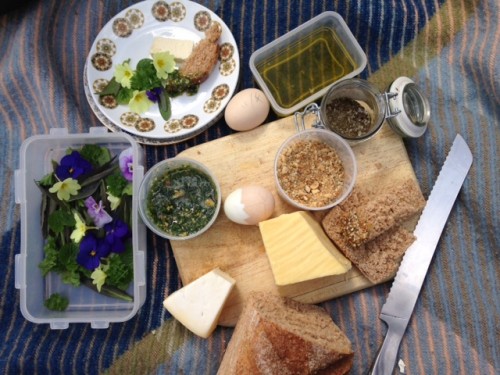
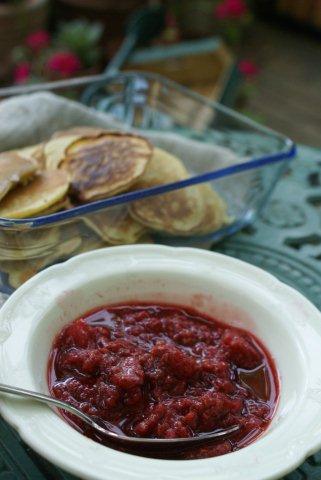
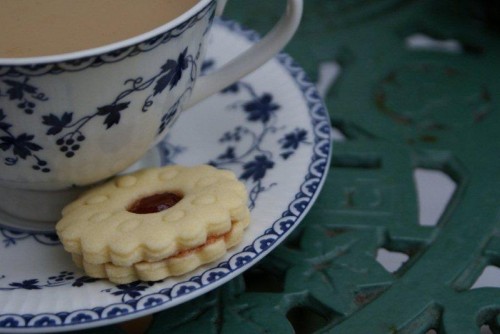
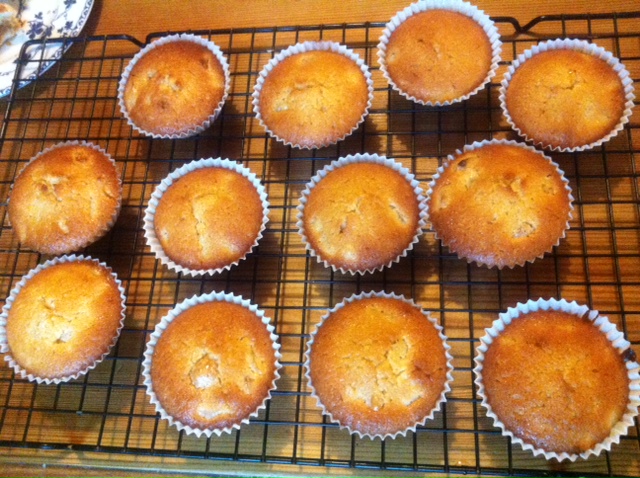
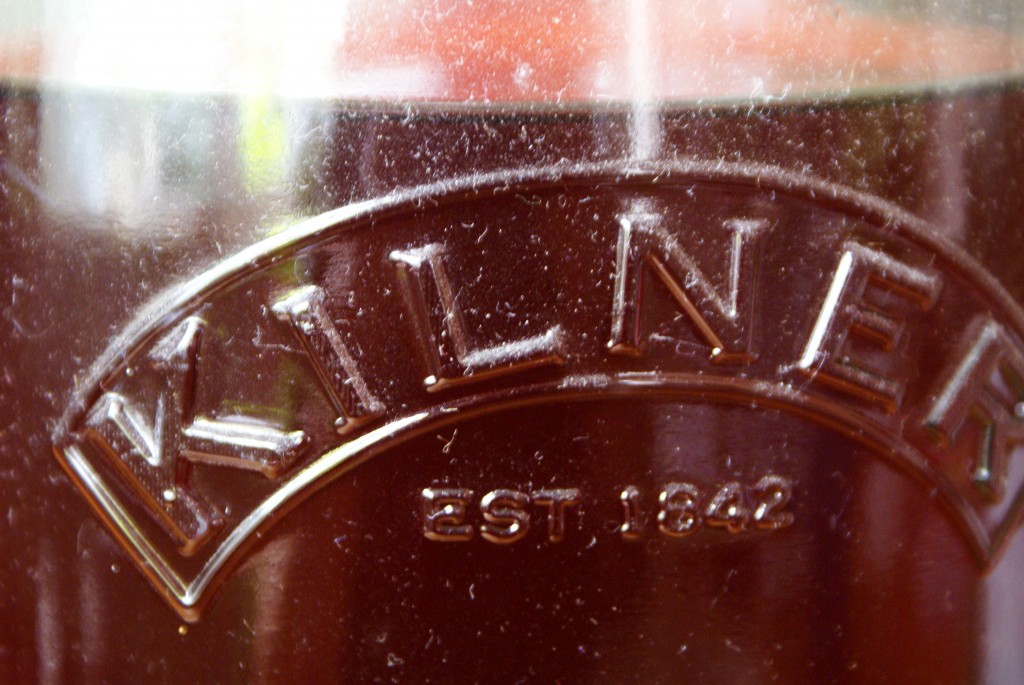
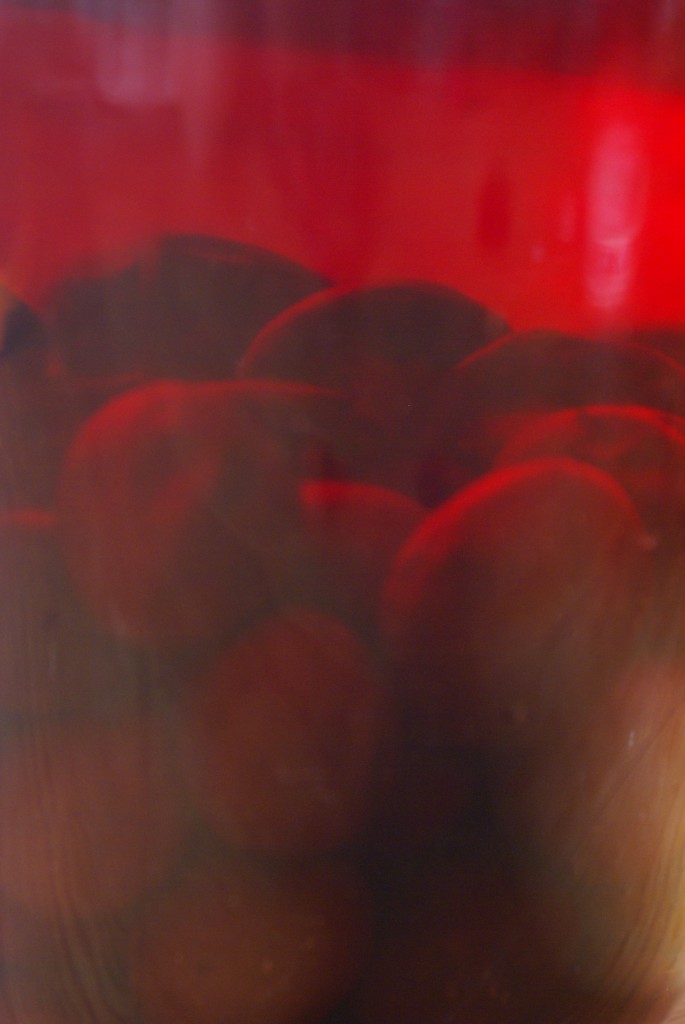
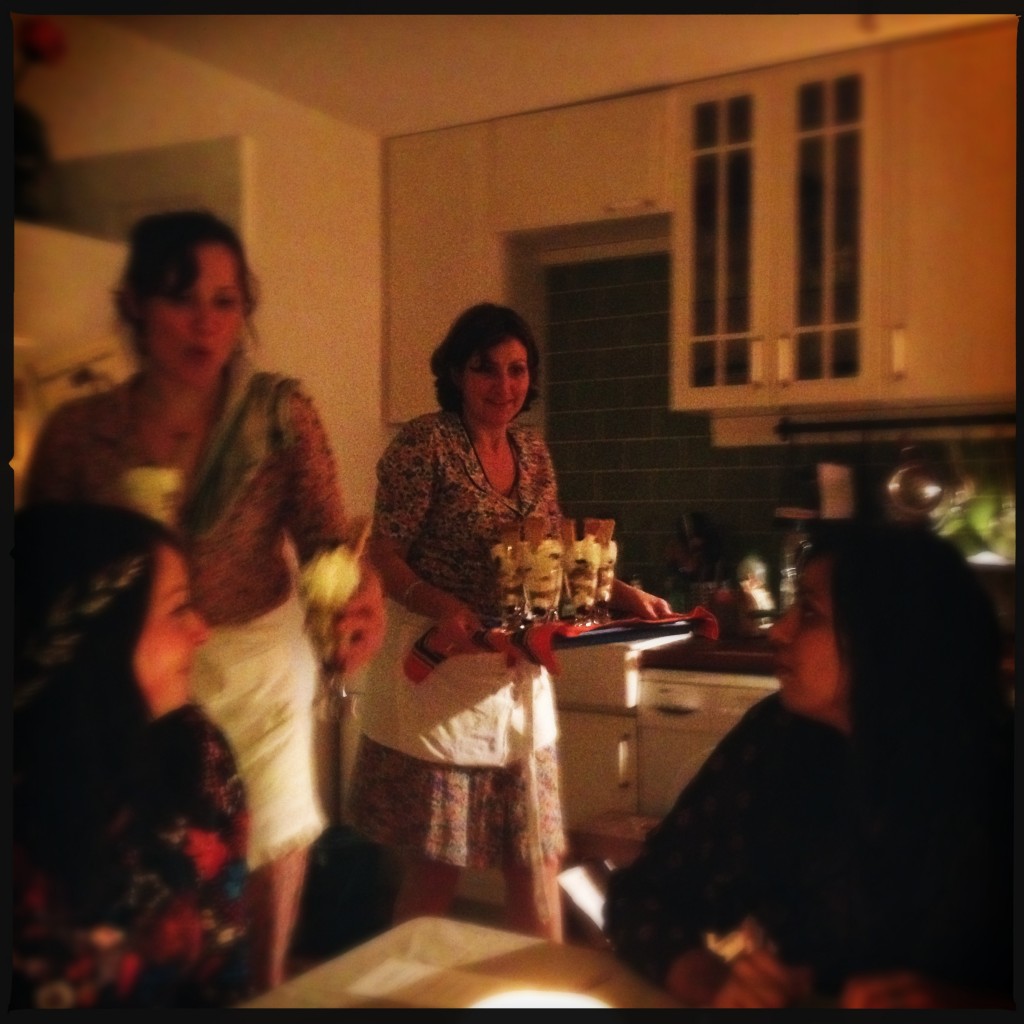
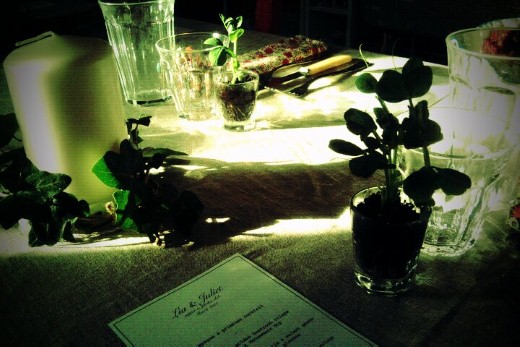
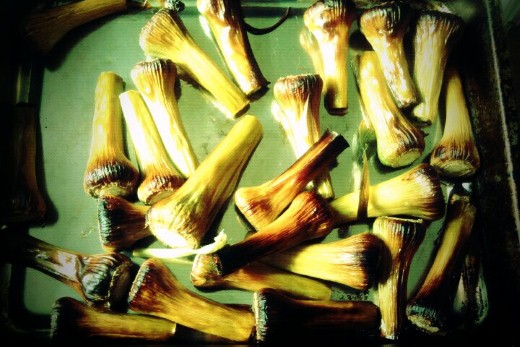
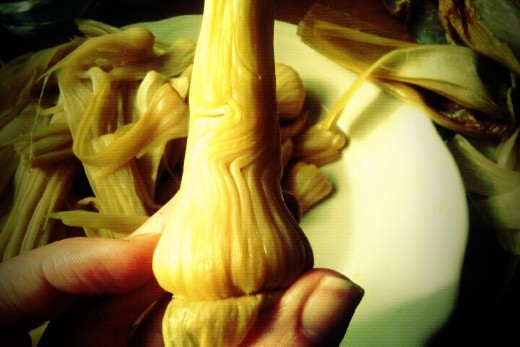
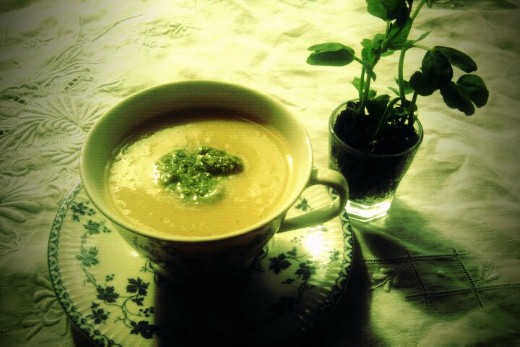
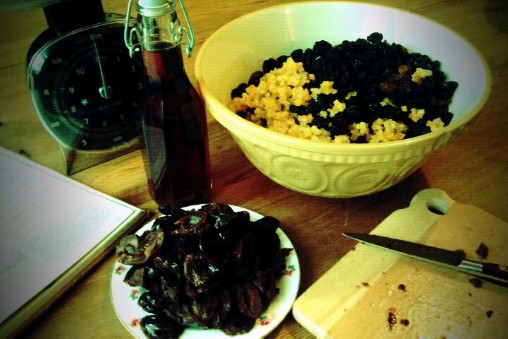
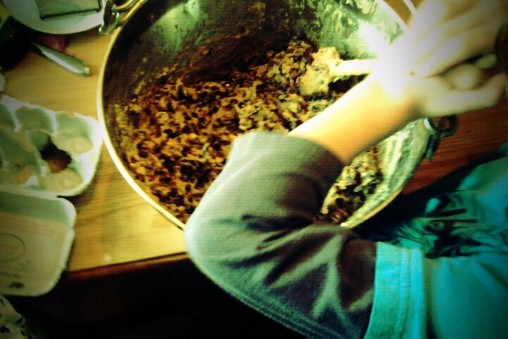
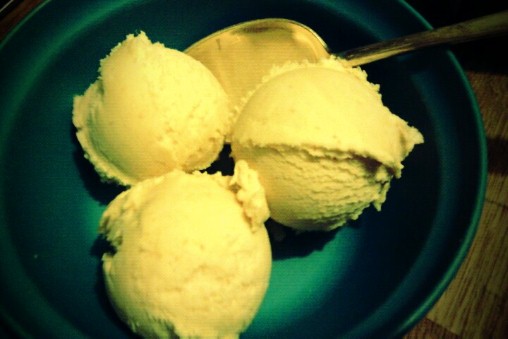
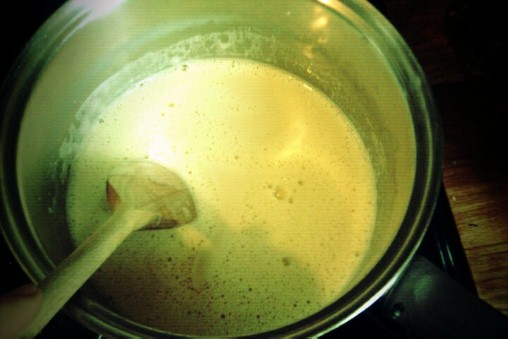
Recent Comments